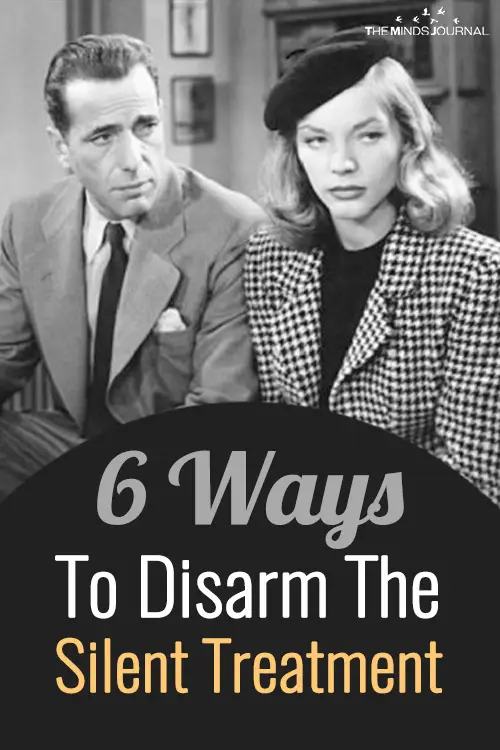For many people, silent treatment may seem like a better option, than engaging in a full-blown fight. They feel that the whole screaming-and-shouting thing is way more draining than just keeping some distance from their partners. However, constantly indulging in silent treatment will do your relationship more harm than good, in the long run.
You still want to do it? In this article, we will share steps to disarm the silent treatment without making it worse.
The silent treatment has been an age-old coping mechanism in relationships for as long as I can remember.
Silence
I think I understand the reaction. Sometimes you just need to create distance between yourself and the offending party. But the silent treatment isn’t fair, and it’s harmful to both parties. For the one giving the silent treatment, it’s like drinking rat poison and expecting the other person to die.
The receiving end of the silent treatment isn’t easy either. You shouldn’t be a doormat. You should definitely approach the other party with understanding. Someone has to initiate the conversation.
Some people in relationships are just passive-aggressive grudge-holders, but I know a way to disarm them without pointing fingers and making it worse.
Related: Why The Silent Treatment Never Works And 6 Ways To Communicate Better
6 Steps To Disarm The Silent Treatment
1. Approach them calmly and gently.
Acknowledge that you’ve hurt them. They may have been at fault in some way too, but you can discuss that later when you are both calm.
“Communication to a relationship is like oxygen to life. Without it… it dies.” – Tony Gaskins
2. Say that you care very much about being a good wife or husband.
You care about your relationship and you want to work it out. They may not seem enthused at the time, but they will remember that you said it.
3. Create physical distance.
If they don’t fall immediately into your arms, a little downtime is likely needed.
4. Offer to listen when they are ready to talk.
You can go to another room, out in the garage, or leave on an errand. The more productive your errand, the better. It’s a free country, but making a big purchase, or going to a bar or strip club probably won’t help you.

5. Know that there is a legitimate hurt underneath it all.
Hurt often turns into anger, and clamming up is a result of that. They just may not be ready to talk yet.
“Powerful words that penetrate the psyche are not forgotten while silence is.” ―
6. Give them some time, but no longer than a day or two.
If after you have done all this, and the silent treatment carries on for days or weeks at a time, it’s a good bet that you need to seriously evaluate your relationship.
I am not a licensed therapist. I’m just a wife that is a passive-aggressive grudge-holder. I come from a long line of passive-aggressive grudge-holders. When you’ve been wired a certain way for so long, change is hard.
My husband follows the anti-silent treatment steps with me and helps calm my storm. I wish I could say these ideas are a 100% cure for everything in our marriage, but I can’t. However, I can say these steps go a long way to help.
Related: The Silent Treatment Vs. No Contact: What’s The Difference?
In relationships, silence can be deafening. But you have to be willing to see the problem and make the effort to change. Change is what relationships are all about.
I will forever remember when he said,
“I want to be a good husband and father.”
Written by Audra Rogers Originally appeared in The Goodmen Project
After or during a fight, it is important that you take a breather in order to gather your thoughts and calm yourself down. But, entirely ignoring your partner and their efforts to repair the situation is not the way to go. Even though, it might seem difficult to communicate with your partner, when you are upset, do it. Let them know what hurts you or bothers you. Let them know what ticks you off so that they don’t do that again.
As long as there are transparency and maturity in your relationship, it will always stand the test of time. Fights and arguments are a part and parcel of every relationship, but make sure that both of you know where you stand, and silent treatment is not going to help you achieve that.












Leave a Reply